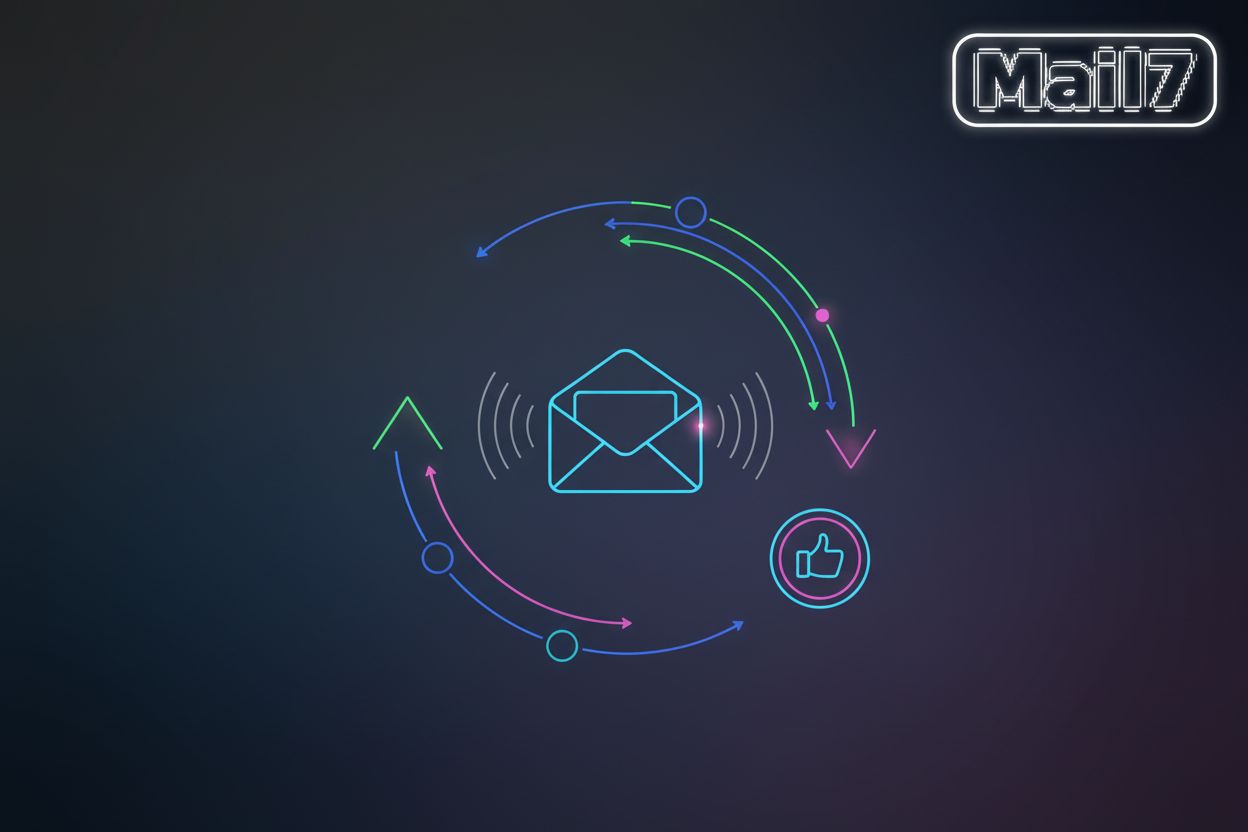Email Header Analysis for Forensics: A Developer's Guide
Understanding Email Headers: Anatomy and Significance
Ever wonder how email systems work behind the scenes? Analyzing email headers gives you key insights into a message's origin and journey.
Email headers are kinda like a digital fingerprint, holding crucial metadata about the message. Understanding their structure is super important for developers working with email integration, security, or forensics. Let's dive into what an email header's made of and why it matters.
Email headers have a bunch of fields that tell you stuff about the email. Some of the main ones are:
- From: Shows the sender's email address.
- To: The recipient's email address.
- Subject: The subject line of the email.
- Date: When the email was sent.
- Received: Lists the servers the email went through.
- Message-ID: A unique ID for the email.
- Return-Path: Where bounce messages should go.
- Content-Type: What format the email's content is in.
- MIME-Version: Which mime standard was used.
- X-Originating-IP: Might show the sender's ip address.
Each field does its own thing, giving you clues about where the email came from and how it got there. For example, the "Received" fields trace the email's trip through different mail servers, with timestamps, hostnames, and ip addresses. Looking at these parts is key for figuring out where an email started and spotting delivery problems.
Email headers basically act as metadata, giving context about an email's journey and what it's like. By looking at this metadata, you can spot patterns, weird stuff, and possible threats.
Like, if the "Received" headers don't match up, it could mean someone's trying to spoof the email. In digital forensics, metadata is a big deal for finding clues about where an email came from, which helps a lot in security investigations.
Email servers are a big part of adding "Received" headers when emails are sent. Each server that handles the email adds its own "Received" header, making a chain of info.
But, different email systems might do things a bit differently with headers. Knowing how servers act helps you trace an email's path correctly. You can picture the process like this:
Understanding email headers is the first step to getting good at email forensics and security. Next, we'll look at how to actually interpret these headers for forensic investigations.
Interpreting Email Headers for Forensic Investigations
So, you've got the raw email headers. Now what? Interpreting them for forensic investigations means looking for clues that tell a story about the email's origin and any potential foul play. It's like being a detective, but with digital breadcrumbs.
The "Received" headers are your primary bread and butter here. They form a chain, showing each server the email passed through. Remember, they're listed in reverse chronological order. So, the bottommost "Received" header usually shows the first server that accepted the email into the mail system you're looking at, giving you the earliest point of entry. The topmost "Received" header is the last server before it landed in your inbox.
When you look at each "Received" header, pay attention to:
- Timestamps: Do they make sense? Are there huge gaps or times that seem off? This could indicate manipulation or delays.
- IP Addresses: These are crucial. They tell you where the email came from at each hop. You can use these ip addresses to do reverse DNS lookups to find the hostnames of the servers. Look for any ip addresses that seem out of place or don't match the claimed sender's location.
- Hostnames: These give you more context about the servers involved. Are they legitimate mail servers, or do they look suspicious?
The "X-Originating-IP" field is another one to watch. It might show the original ip address of the sender's computer. But, it's not always there, and sometimes it can be spoofed or unreliable, especially if the sender used a webmail interface or a proxy. So, treat it as a potential clue, not a definitive answer.
Sender-related fields like "From," "Reply-To," and "Return-Path" are also vital. In forensics, you're looking for inconsistencies. If the "From" address looks legit, but the "Return-Path" points to a completely different, suspicious domain, that's a big red flag for spoofing.
Authentication results are super important too. You'll often find these in an "Authentication-Results" header. This header will tell you if SPF, DKIM, and DMARC checks passed or failed. A "fail" here is a strong indicator that the email might not be legitimate. For example, you might see something like spf=fail, dkim=pass, or dmarc=reject.
Don't forget about "Message-ID". While it's meant to be unique, sometimes attackers might try to reuse or manipulate these. It can help in tracking conversations, but it's not a foolproof indicator of authenticity on its own.
Finally, "Content-Type" and "MIME-Version" might seem technical, but in forensics, they can sometimes reveal if an email has been tampered with or if it's trying to disguise its true nature, like hiding malicious code within seemingly benign content.
By carefully dissecting these fields and looking for anomalies, you can start to build a picture of the email's journey and identify potential signs of spoofing, tampering, or other malicious activity. Next, we'll get practical with step-by-step analysis.
Practical Email Header Analysis: A Step-by-Step Guide
Analyzing email headers might seem a bit much at first, but if you take it step-by-step, you can uncover some really useful forensic info. Let's break down how to look at email headers effectively.
First off, you gotta get your hands on the email headers. How you do this changes depending on your email client. In Gmail, open the email, click the three dots in the top right, and pick "Show original." That'll show you all the headers. For Outlook, open the email, go to "File," then "Info," then "Properties," and you'll find the headers in the "Internet headers" section.
Exporting headers can make analysis easier. Just copy the header text from your email client and paste it into a text file for looking at later. You can also use command-line tools like curl or openssl to grab headers straight from a mail server, which is a more technical way to do it. For instance, openssl s_client -starttls smtp -connect mail.example.com:25 can help you start a secure chat and get email details. After you connect, you'll typically need to send a command like VRFY or EXPN (though these are often disabled for security reasons) or, more commonly, use it as a relay to send a test email to yourself and then check the headers of that received email. It's pretty advanced though, and not for everyone.
The "Received" headers are super important for tracing the email's path. Each server that handles the email adds a "Received" header, creating a chain of info. The headers are listed in reverse order, so the topmost "Received" header shows the last server the email went through before reaching you.
Look at each "Received" header to find the ip addresses, hostnames, and timestamps. This info helps you map out the email's journey. Watch out for any weirdness, like unexpected locations or servers, which might mean something shady's going on.
Getting key info like the sender, origin, and timestamps is vital. The "From," "Reply-To," and "Return-Path" fields give you sender info. Make sure these fields match up. If they don't, it could be email spoofing.
Find the originating ip address from the "Received" headers or the "X-Originating-IP" field, if it's there. Do reverse dns lookups on these ip addresses to find the hostnames and check if they're legit. Look at timestamps to spot any time zone mix-ups or delays, which could mean it's been messed with.
Knowing these steps lets you do a solid email header analysis, which is key for spotting potential security threats and checking if email messages are real. Next, we'll get into identifying key info within email headers, like sender details, origin points, and timestamps, to make your investigative skills even better.
Advanced Forensics Techniques: Uncovering Spoofing and Tampering
Is that email really from your ceo? Bad guys often use tricky methods to hide who they really are, making email header analysis super important. Let's look at how to spot spoofing and tampering attempts.
Email spoofing is when someone fakes the "From" address and other header fields to trick people. Attackers might mess with the "Reply-To" field to get responses meant for the real sender. Spotting these fake headers means carefully checking the email's metadata.
- One way is to really look at the "From" address, comparing it to other header fields like "Sender" and "Return-Path."
- If these don't match, that's a big warning sign. For example, if the "From" address says it's from a company, but the "Return-Path" goes to an outside domain, it's probably spoofing.
- Also, watch out for tiny misspellings in domain names – that's a common trick cybercriminals use.
SPF (Sender Policy Framework), DKIM (DomainKeys Identified Mail), and DMARC (Domain-based Message Authentication, Reporting & Conformance) are key tools for checking if the sender is legit. These records, when set up right, help email servers figure out if a message really comes from the domain it claims to.
- SPF records say which mail servers are allowed to send emails for a domain.
- DKIM uses digital signatures to check the email content's integrity and confirm the sender's domain.
- DMARC builds on SPF and DKIM, letting domain owners tell receiving servers what to do with emails that don't pass authentication.
Checking these authentication results in the email header gives you insight into whether the sender is legit. A "fail" result means there's a higher chance of spoofing.
Besides fake headers and authentication fails, all sorts of weird things can point to tampering. Differences in timestamps, ip addresses, and server names need a closer look.
- Timestamps that don't line up with the "Received" header chain can mean it's been messed with.
- Ip addresses should match where the sender says they are. Use reverse dns lookups to check hostnames.
- Weird header fields or formatting might also show tampering.
By carefully looking at these things, developers can make email security better and protect users from phishing and other email attacks. Next, we'll explore how to investigate weird stuff and inconsistencies in email headers to find potential threats.
Leveraging Tools and APIs for Email Header Analysis
Using tools and apis can really speed up email header analysis, giving you valuable insights more easily. So, how can developers use these resources to boost their forensic investigations and security measures?
Mail7 is an email testing solution made for developers, with features to make email analysis and testing simpler. You can create disposable email addresses, get emails in real-time, and automate your email testing workflow. Mail7 has a developer-friendly REST api with good documentation, making it easy to integrate.
Some good things about Mail7:
- Disposable Email Testing api
- Fast and reliable email delivery service
- Enterprise-grade security with encrypted communications
- Unlimited test email reception
There are lots of open-source libraries to help parse and analyze email headers with code. Python's email package is a popular one, with tools to grab and process header info.
Here's a basic example of how to get header fields using Python:
import email
from email.parser import Parser
email_string = """From: [email protected]
To: [email protected]
Subject: Test Email
This is the email body."""
parser = Parser()
message = parser.parsestr(email_string)
print(message['From'])
print(message['To'])
print(message['Subject'])
Regular expressions also let you flexibly analyze header content, helping developers find patterns and anomalies.
For more advanced analysis, commercial tools like MailXaminer and EmailTracer offer complete features. These tools automate header analysis, spot potential threats, and create detailed reports. Forensic analysts and law enforcement agencies use them a lot.
These tools can help with:
- Automating the extraction of key info from email headers
- Spotting suspicious patterns and anomalies
- Creating detailed reports for forensic investigations
By using these tools and apis, developers can really improve their email header analysis skills, making security and forensic investigations better. Next, we'll look at how to visualize email header data to get even deeper insights.
Visualizing Email Header Data for Deeper Insights
Sometimes, just looking at raw text headers can be overwhelming. Visualizing email header data can make it much easier to spot patterns, anomalies, and the overall flow of an email. It turns a wall of text into something more digestible.
Visualizing email headers can help you:
- Understand the email's path at a glance: See the sequence of servers and their locations clearly.
- Identify anomalies quickly: Unusual hops, unexpected locations, or strange timestamps become more obvious when visualized.
- Trace the origin: Get a clearer picture of where the email originated from.
- Present findings effectively: Visualizations are great for explaining complex data to others, whether it's for a technical team or a non-technical audience.
There are several ways to visualize email header data:
- Network Graphing Tools: Tools that can take ip addresses from headers and plot them on a map or as a network graph can be very insightful. You can see the geographical spread of the email's journey.
- Timeline Visualizations: Representing the timestamps from "Received" headers on a timeline can highlight any delays or unusual timing.
- Custom Dashboards: For ongoing analysis, you might build custom dashboards that pull header data and present it in charts and graphs.
While specific tools for direct email header visualization aren't as common as general network analysis tools, you can often export header data and import it into tools like:
- Gephi: For creating network graphs.
- Tableau or Power BI: For creating interactive dashboards and charts.
- Custom scripts: Using libraries like Python's
matplotliborplotlyto create your own visualizations.
The process usually involves parsing the headers to extract relevant data (like ip addresses, timestamps, and server names) and then feeding that data into your chosen visualization tool.
By making the complex structure of email headers visual, you can gain a much deeper understanding and uncover insights that might be missed in a purely text-based analysis. Next, we'll look at how email header analysis fits into development and testing workflows.
Email Header Analysis in Development and Testing Workflows
Email header analysis isn't just for forensic investigations; it's a powerful tool during development and testing. Putting this analysis into your workflows helps make sure email integrity, security, and reliability are solid from the start.
You can build email header analysis right into your automated testing pipelines. This way, you automatically check header fields, authentication results (SPF, DKIM, DMARC), and other key data.
- Test case validation: Write test cases that specifically check header fields. For example, make sure the "From" address matches who it's supposed to be from and that SPF and DKIM checks pass.
- CI/CD integration: Use CI/CD tools to run these header analysis tests on every code change. This way, you catch problems early in the development process.
Keeping real email addresses safe during testing is important. Disposable email addresses offer a simple fix.
- Testing environments: Use disposable addresses for testing and development to avoid spam and unauthorized access to real inboxes.
- Spam prevention: Use disposable email services to stop spam and make sure your testing processes don't accidentally create security risks.
- Workflow integration: Build disposable email address generation right into your testing workflows so it's easy to use.
Checking email addresses before sending improves deliverability and stops bounces. Email verification apis provide this function.
- Real-time validation: Use email verification apis to check email addresses right away, making sure you only send to valid addresses.
- Deliverability: Stop bounces and improve email deliverability by checking address validity when they're entered.
- Data entry points: Integrate email verification into signup forms and other places where data is entered to keep your email lists clean and accurate.
By putting email header analysis, disposable email addresses, and verification apis into your development and testing workflows, you create a stronger and more secure email setup. Next, we'll explore how to visualize email header data to get even deeper insights.
Security Best Practices: Protecting Against Email-Based Threats
Email-based threats are a growing worry, but good security measures can lessen these risks. Putting best practices in place makes sure your email communications stay safe and trustworthy.
Sender Policy Framework (SPF), DomainKeys Identified Mail (DKIM), and Domain-based Message Authentication, Reporting & Conformance (DMARC) are essential for stopping email spoofing. These authentication methods check that an email really comes from the domain it claims to.
- SPF records say which mail servers are allowed to send emails for your domain.
- DKIM uses digital signatures to make sure email content is intact and confirm the sender's domain, like we talked about before.
- DMARC builds on SPF and DKIM, telling receiving servers what to do with emails that don't pass authentication.
Watching authentication results is key to spotting and fixing potential problems. Regularly check and update your SPF, DKIM, and DMARC setups to deal with changing threats.
Setting clear email security policies for development teams is super important. Give them good training on email header analysis and threat detection.
- Use secure coding practices to prevent email-related vulnerabilities, like header injection and cross-site scripting (XSS). Header injection is when an attacker inserts malicious header information into an email, which can trick email servers or clients into performing unintended actions.
- Make sure developers understand the risks of handling sensitive email data.
- Enforce regular security checks and code reviews to find and fix potential weaknesses.
Using monitoring tools helps detect suspicious email activity. Regularly check email server settings and logs to find and fix potential vulnerabilities.
- Use Security Information and Event Management (SIEM) systems to link email data with other security events, giving you a full picture of your security status.
- Watch for unusual patterns, like sudden increases in outbound email traffic or failed authentication attempts.
- Set up alerts to notify security teams of potential threats right away.
By putting these security best practices in place, developers can really cut down the risk of email-based threats. Next, we'll delve into visualizing email header data to gain even deeper insights.
Case Studies and Examples: Real-World Email Forensics
Email forensics in action shows how powerful header analysis can be. Let's look at how real-world cases use these techniques to solve crimes and boost security.
- Phishing Investigations: Analysts trace bad emails, finding spoofed sender addresses and malicious links. For example, they might see a "Received" header pointing to a server in a different country than the supposed sender, or a "Reply-To" address that's completely different from the "From" address.
- Business Email Compromise (BEC): Experts spot weird things in sender info, stopping financial losses. For instance, inconsistencies in "Reply-To" fields can reveal BEC attempts. They might also see that the "From" address is slightly altered, like "[email protected]" instead of "[email protected]".
- Spam Detection: Header analysis helps find patterns in spam emails, making filtering better. Looking at the "Received" headers can expose where spam campaigns come from and how they travel. You might see a long chain of suspicious, unrelated servers in the "Received" headers.
Understanding these examples really shows how important it is to get good at email header analysis.










